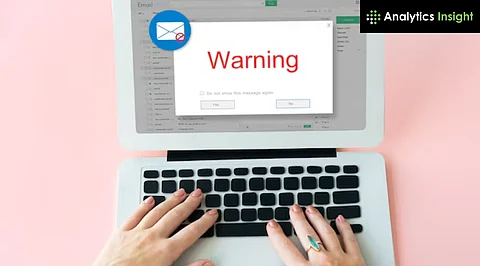

Phishing emails often use urgency, fake links, or spoofed sender addresses.
Never click on suspicious links or download unknown attachments.
Use multi-factor authentication and spam filters for extra protection.
Email scams and phishing remain a persistent threat, tricking victims into divulging sensitive information, passwords, or even money with a single click. In today's interconnected world, it's crucial to recognize fake emails and avoid potential trouble, whether personal or professional. By learning to spot suspicious messages, you can protect yourself from financial loss and identity theft.
A phishing email is a fake message that tries to get someone to:
Click on bad links
Download dangerous files
Give out passwords or banking information
A lot of the time, these emails pretend to be from real businesses, services, or people that are trusted.
Sender Address Not Normal: Emails that are meant to trick often come from sites that look like real ones:
For instance, use support@paypa1.com instead of support@paypal.com.
Check the whole email address, not just the name of the writer.
Bad Grammar and Spelling: Trustworthy businesses check their writing for mistakes. Mistakes in grammar, spelling, or punctuation can be signs of a fake.
Language Based on Fear or Urgency: Scammers use threats like:
"Your account will be locked in 24 hours!"
"Unusual login found; check now!"
If an email says action is needed right away, take a moment to check it.
Out of the Blue Attachments: Do not open a PDF, ZIP file or bill if it was not expected. These often have malware or ransomware.
Links That Look Fishy: Move the mouse over links before clicking on them. A link that says “www.amazon.com” might lead to a different site.
Requests for Private or Business Data: A real service would not email and ask for:
Passwords
Credit card data
Social security numbers
If unsure, visit the official site directly and log in manually.
Also read: Microsoft OneDrive Phishing Scam: How to Protect Yourself?
Multi-Factor Authentication (MFA) should be turned on
MFA adds an extra layer of protection, even if login credentials are stolen.
Use a Spam Filter You Can Trust
Modern email services can catch many phishing attempts. Keep filters updated and mark junk as spam.
Stay in School
Cybercriminals evolve. Stay informed on new scams and train workers if necessary.
Quit Wi-Fi right away
Use a trustworthy security program to do a virus check
Start by changing passwords for email and bank accounts
Contact the bank or IT/security team if needed
Report the phishing attempt to the email provider and local cybercrime agency
It might look like phishing emails are safe, but clicking on one without thinking could cost money, identity, or data. The good news? It is not hard to spot warning signs in a fake email if the signs are known.
Be wary, check everything and practice good digital health. Because being aware is the first line of defence in hacking—and it can not be skipped.
Also read: How to Protect Yourself from AI Frauds and Stay One Step Ahead?
